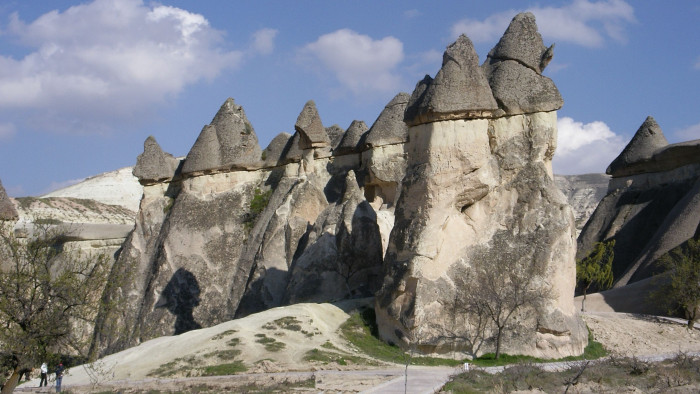In the high mountain steppe of Cappadocia, near Göreme, strange cone-shaped rock formations rise in a ghostly landscape. They are tuff rocks of volcanic origin, resting on older rock. They have been shaped by constant erosion into a uniquely impressive landscape.
Numerous more or less spacious caves can be found in the larger rock formations: Dwellings and churches from earlier centuries. Here, in the Middle Ages (10th to 13th centuries), a Greek minority of the population sought protection from Arab persecution. The Christians dug dwellings, chapels and monks' cells into the tuff rock of Cappadocia. There were also dwellings here in earlier times. In the 7th century, several hundred thousand people are said to have found refuge in the underground cells. The numerous monasteries and churches combine numerous Byzantine styles of the time in their unique architecture.

The rock formations were created by now extinct volcanoes whose lava flows cover large parts of the highlands. In addition to lava, the volcanoes also spewed ash and solid rocks. These were washed away by erosion, leaving behind the solidified basaltic lava that forms today's rock formations.
In the underground city